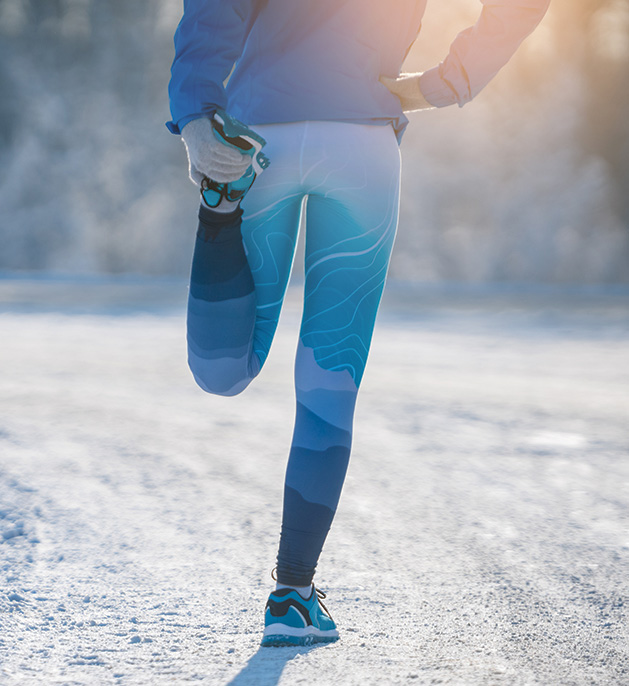
iStock/Lifemoment
Expert offers tips for outdoor exercise.
Despite the holidays appearing long in the distance of life’s rearview mirror, winter still has the state in its icy clutches. With warm weather sometimes seeming like a distant memory, most Minnesotans don’t let the snow and cold slow them down, simply choosing to adapt their way of life around the arctic air.
While keeping fit in the cold conditions may seem a bit intimidating, experts say otherwise, noting that a few minor changes are all one needs in order to hit the snowy trails. Even as the weather begins to warm, extra precautions remain in order.
With seven locations scattered across the Twin Cities (including Maple Grove), Orthology is dedicated to providing advanced orthopedic therapy to those who are looking to restore and enhance their movement. Focusing on muscular and skeletal health, Orthology takes a hands-on approach to maintaining wellness.
David Rickheim, M.D., is the clinic manager at Orthology’s Woodbury location, where he focuses on addressing the entire body when treating injuries. Dr. Rickheim is also an avid runner, often imparting a mix of his expertise as a physical therapist and hobby athlete.
It’s not uncommon for runners (or walkers for that matter) to encounter icy patches while outside—and of course, there’s no avoiding the snow. Dr. Rickheim says that the elements can be easily weathered with a bit of balance control. “I make sure my patients are doing a good strengthening program,” he explains. Dr. Rickheim also encourages those who aren’t used to running in the winter to ease themselves into it. “Go out to a park area, and run up and down the trail, avoiding any hills,” he says. “If it’s windy, I recommend [running] in the wind, and then running with the wind on the way back.”
Dr. Rickheim says that the most crucial part of winter running is to make sure that the body’s muscles are stretched and properly warmed up prior to engaging in any continued exercise. “When it’s cold, your muscles are likely to be tighter and constricted,” he says. With blood flow operating differently during the warmer months, the cold can make it easier to sustain an injury.
Some important areas to focus on while warming up include the hips, glutes and core. Dr. Rickheim recommends special attention be paid to the ankles, suggesting stabilizing stretches in order to minimize the risk of slipping.
“Rolling legs out on a foam roller is great,” he says. Otherwise, runners should focus on dynamic warmups, avoiding stretches where the body is static. He suggests standbys like running kickbacks, leg lunges and leg swings. “The dynamic movement encourages blood flow,” he explains. “If you do a lot of static [stretches], it can encourage cramping.”
Just as important as stretching are the clothes worn while running. Dr. Rickheim suggests a base compression layer in order to keep the body insulated. He says that the classic suggestion of dressing as if it’s 20 degrees warmer than it is can be a good rule of thumb when planning ones clothing for extended periods outdoors. “I like a good windbreaker with a hood to keep my head warm,” Dr. Rickheim says. “A pair of good quality gloves is good, too, to keep your hands warm. It just makes me feel better.”
Orthology
9325 Upland Lane N. Suite #230, Maple Grove
763.315.0466
Facebook: orthologyinc
Twitter: @orthology_inc






















